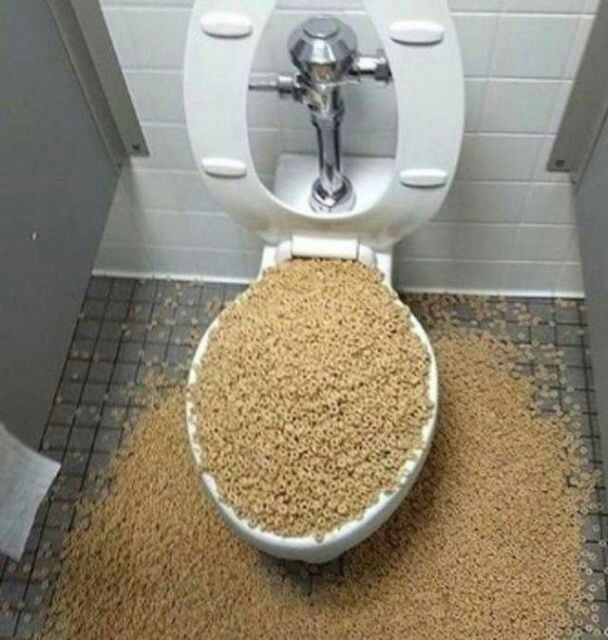Are You Allowed to Dispose of Food in the Toilet?
Are You Allowed to Dispose of Food in the Toilet?
Blog Article
We have found the article relating to Think Twice Before Flushing Food Down Your Toilet below on the web and believe it made sense to relate it with you on this site.

Introduction
Lots of people are usually confronted with the dilemma of what to do with food waste, particularly when it comes to leftovers or scraps. One usual inquiry that occurs is whether it's fine to purge food down the bathroom. In this write-up, we'll explore the reasons that individuals may take into consideration flushing food, the repercussions of doing so, and alternate approaches for appropriate disposal.
Reasons people could take into consideration flushing food
Lack of awareness
Some people might not understand the prospective injury triggered by purging food down the bathroom. They may wrongly believe that it's a safe method.
Convenience
Purging food down the toilet may look like a quick and simple service to throwing away unwanted scraps, especially when there's no neighboring garbage can available.
Negligence
In many cases, people might merely pick to flush food out of large negligence, without taking into consideration the repercussions of their activities.
Effects of flushing food down the toilet
Ecological effect
Food waste that ends up in waterways can contribute to air pollution and damage aquatic ecological communities. Additionally, the water made use of to flush food can strain water resources.
Plumbing issues
Purging food can cause stopped up pipes and drains pipes, creating expensive plumbing repair services and inconveniences.
Types of food that need to not be purged
Fibrous foods
Foods with coarse structures such as celery or corn husks can get entangled in pipes and trigger blockages.
Starchy foods
Starchy foods like pasta and rice can take in water and swell, bring about blockages in pipelines.
Oils and fats
Greasy foods like bacon or food preparation oils need to never be purged down the commode as they can solidify and trigger blockages.
Appropriate disposal methods for food waste
Making use of a waste disposal unit
For homes outfitted with waste disposal unit, food scraps can be ground up and purged through the plumbing system. Nonetheless, not all foods are suitable for disposal in this way.
Recycling
Particular food product packaging products can be reused, reducing waste and minimizing environmental effect.
Composting
Composting is an environment-friendly method to deal with food waste. Organic products can be composted and made use of to enhance dirt for gardening.
The value of proper waste management
Minimizing ecological injury
Proper waste administration methods, such as composting and recycling, aid decrease pollution and maintain natural resources for future generations.
Protecting pipes systems
By staying clear of the method of flushing food down the toilet, property owners can prevent pricey pipes repairs and maintain the integrity of their plumbing systems.
Final thought
To conclude, while it might be alluring to purge food down the toilet for ease, it's important to comprehend the possible effects of this activity. By adopting appropriate waste monitoring techniques and taking care of food waste properly, individuals can contribute to much healthier pipes systems and a cleaner environment for all.
FLUSH FOOD DOWN THE TOILET?
FLUSHING FOOD CAN CAUSE BLOCKED DRAINS IN YOUR HOME
All of the plumbing fixtures in your home are connected to the same sewer pipe outside of your home. This outdoor sewer pipe is responsible for transporting all the wastewater from your home to the Council sewer mains. Even small pieces of food that go down the kitchen sink can cause problems for your sewer. It should therefore be obvious that flushing larger bits of food, such as meat, risks a clog in either the toilet itself or the sewer pipes. Flushing greasy food is even more problematic because oil coagulates when it cools, coating the interior lining of your pipes.
THE TOILET IS NOT A BIN
Food isn’t the only thing that people shouldn’t be flushing down the toilet. People use the toilet to dispose of all kinds of things such as tampons, makeup wipes, dental floss, kitty litter and even underwear. Water goes to great lengths to educate residents about the high costs and stress placed on wastewater treatment systems simply from people flushing the wrong stuff down the toilet. It costs taxpayers millions of dollars each year, and homeowners thousands in blocked drain repairs.
FLUSHING FOOD IS A WASTE OF WATER
Flushing food is a waste of our most precious resource - water. In June this year Level 1 water restrictions were introduced to protect water supply from drought conditions. Much of New South Wales continues to be affected by prolonged drought with recent figures revealing up to 97 per cent of the state remains in drought. Depending on whether you have a single or dual flush toilet, every single flush uses between five and 11 litres of water. In the current climate this is a huge amount of water to be wasting on flushing food that should be placed in the bin (or better yet, the compost).
https://www.jabplumbingsolutions.com.au/blog/can-you-flush-food-down-the-toilet

I discovered that page on What Can Happen If You Flush Food Down the Toilet? while surfing the web. For those who liked our blog post kindly consider to pass it around. Thank you so much for taking the time to read it.
Schedule Service Now Report this page